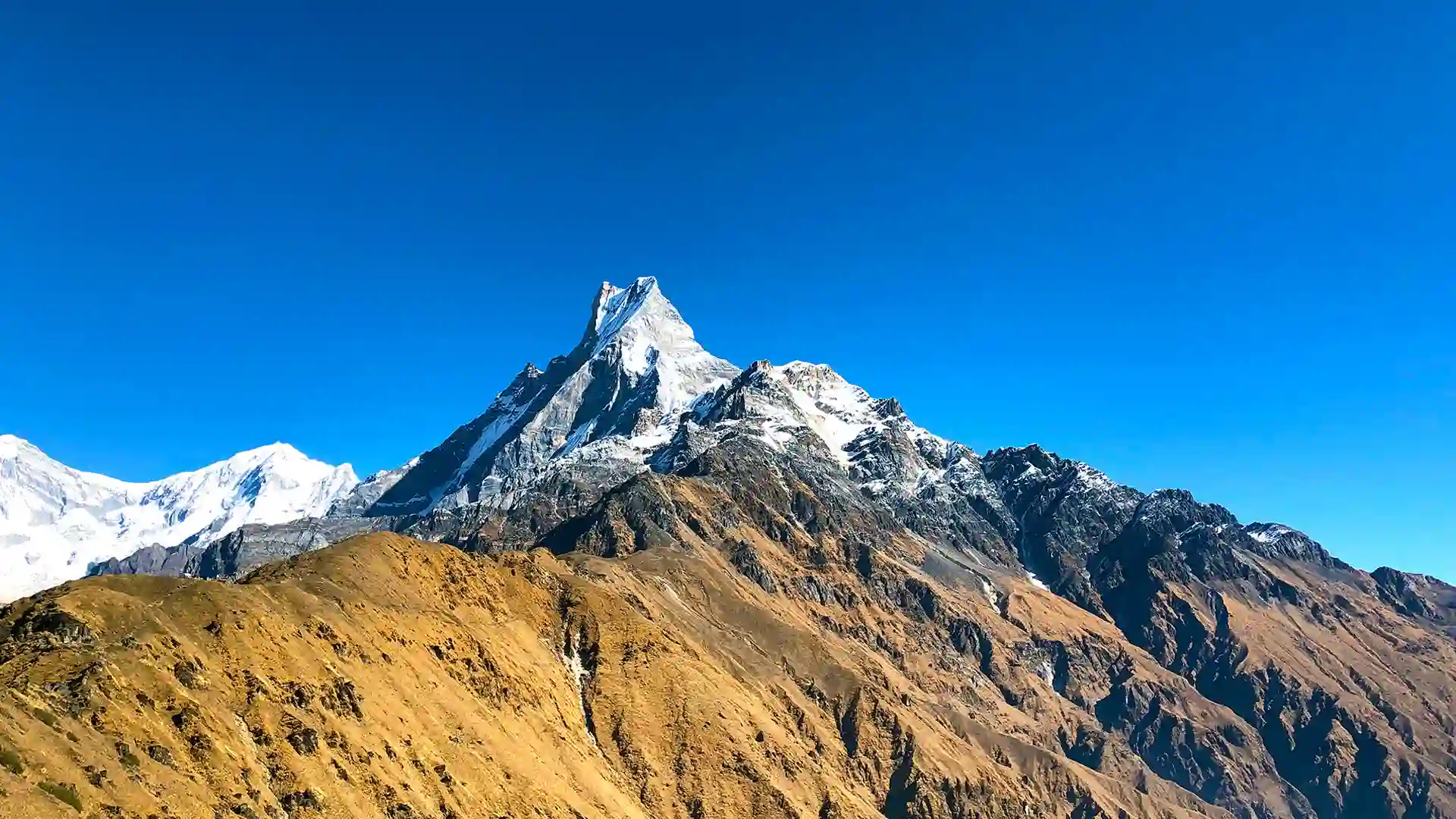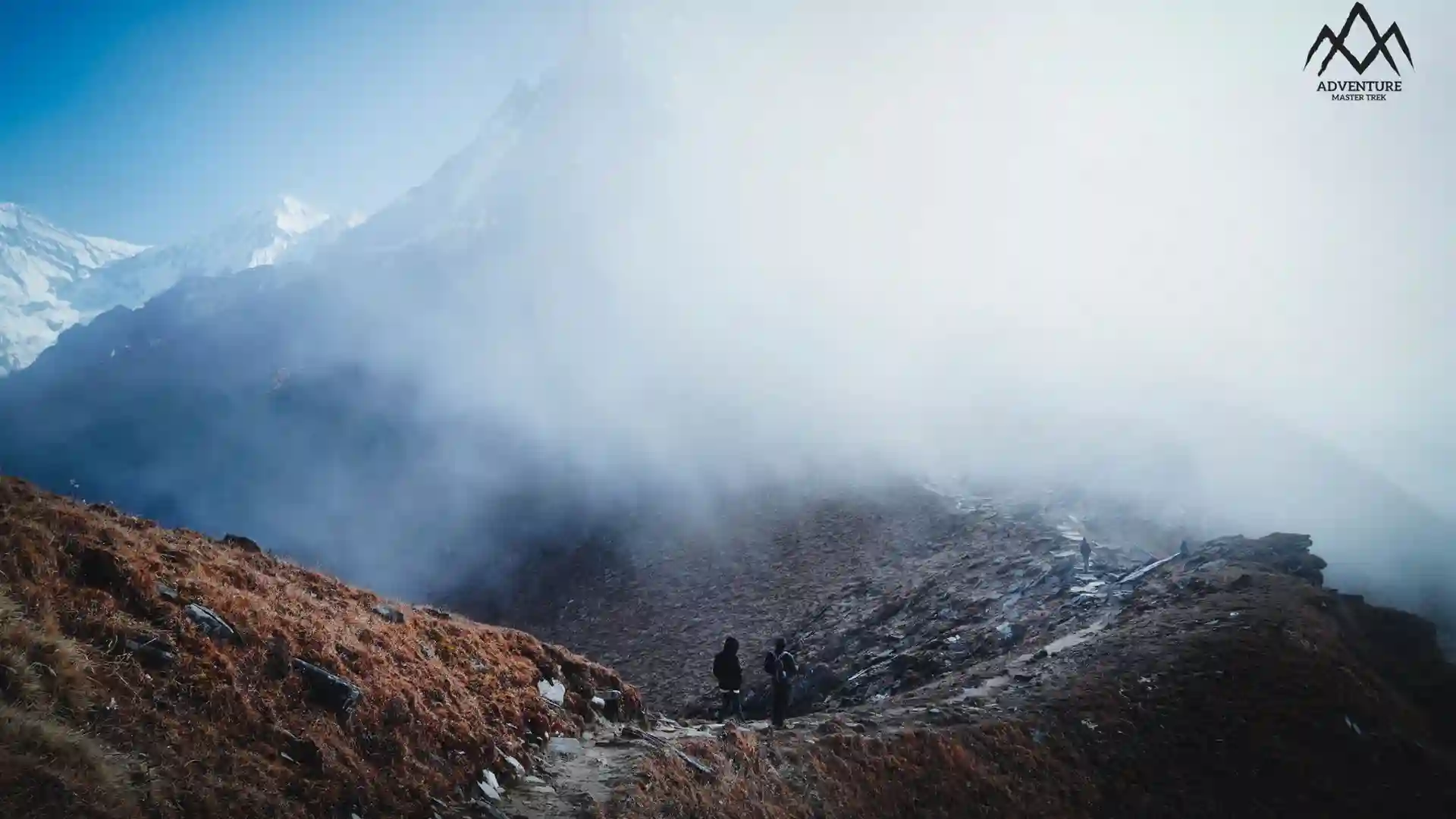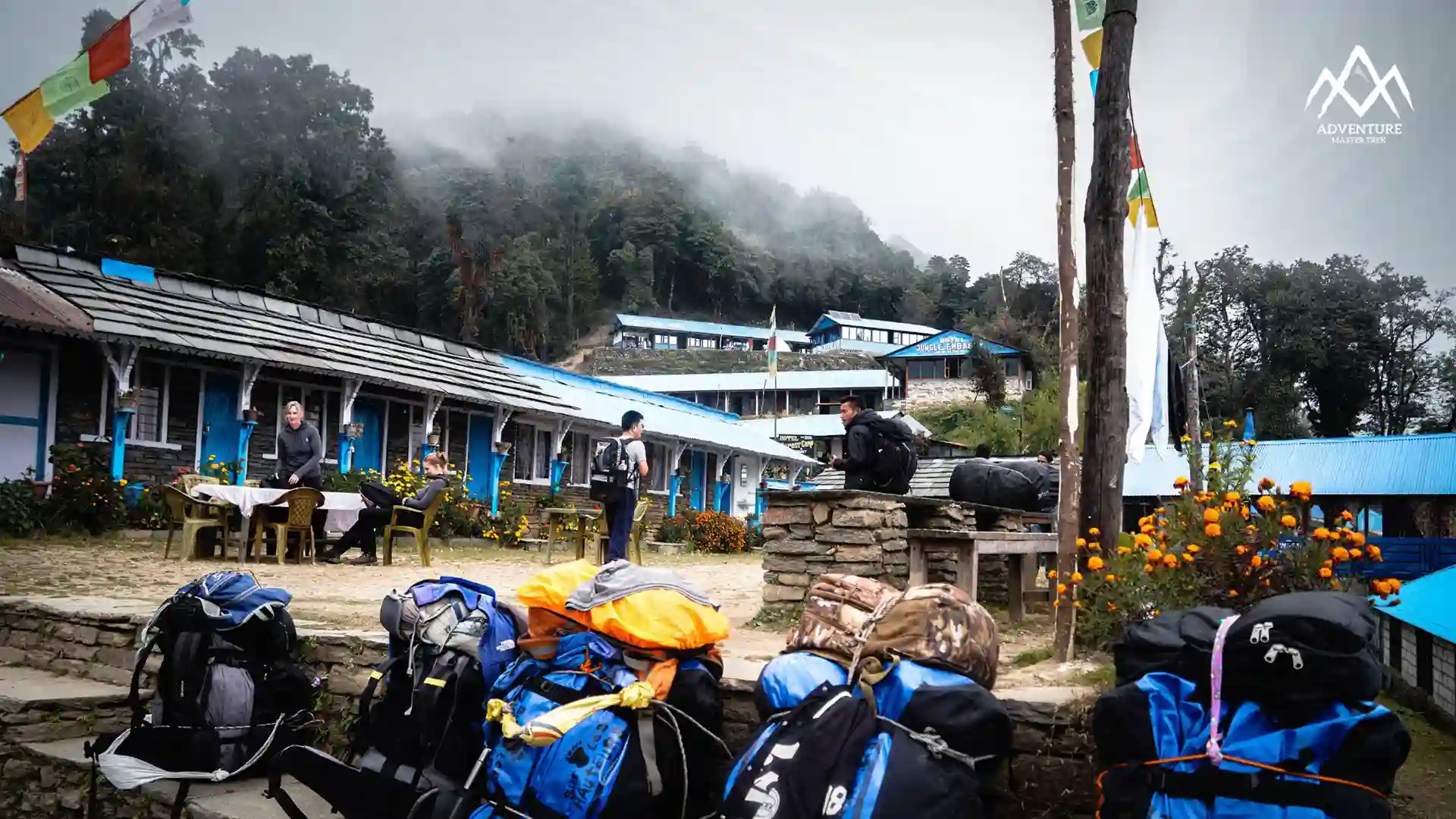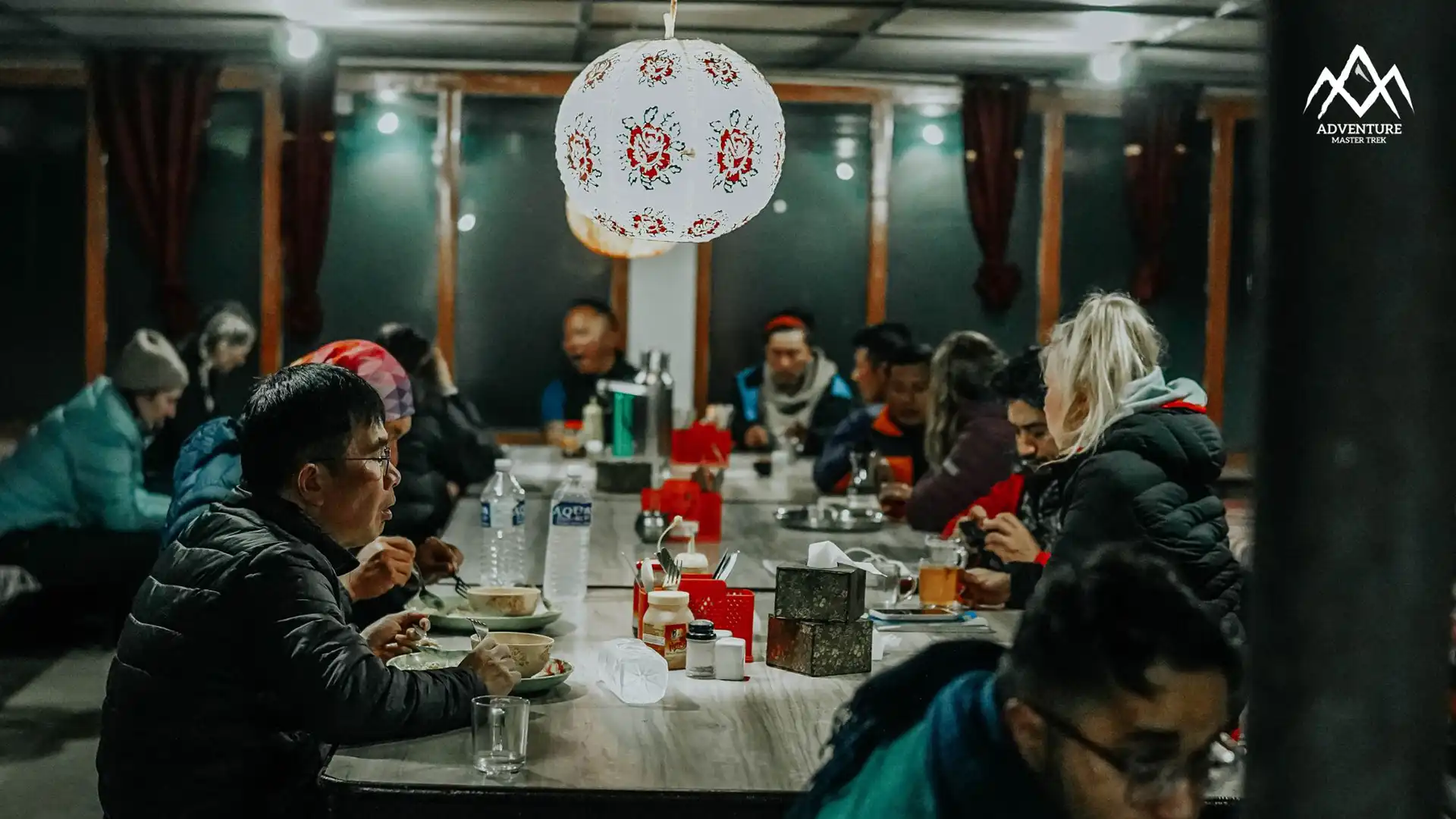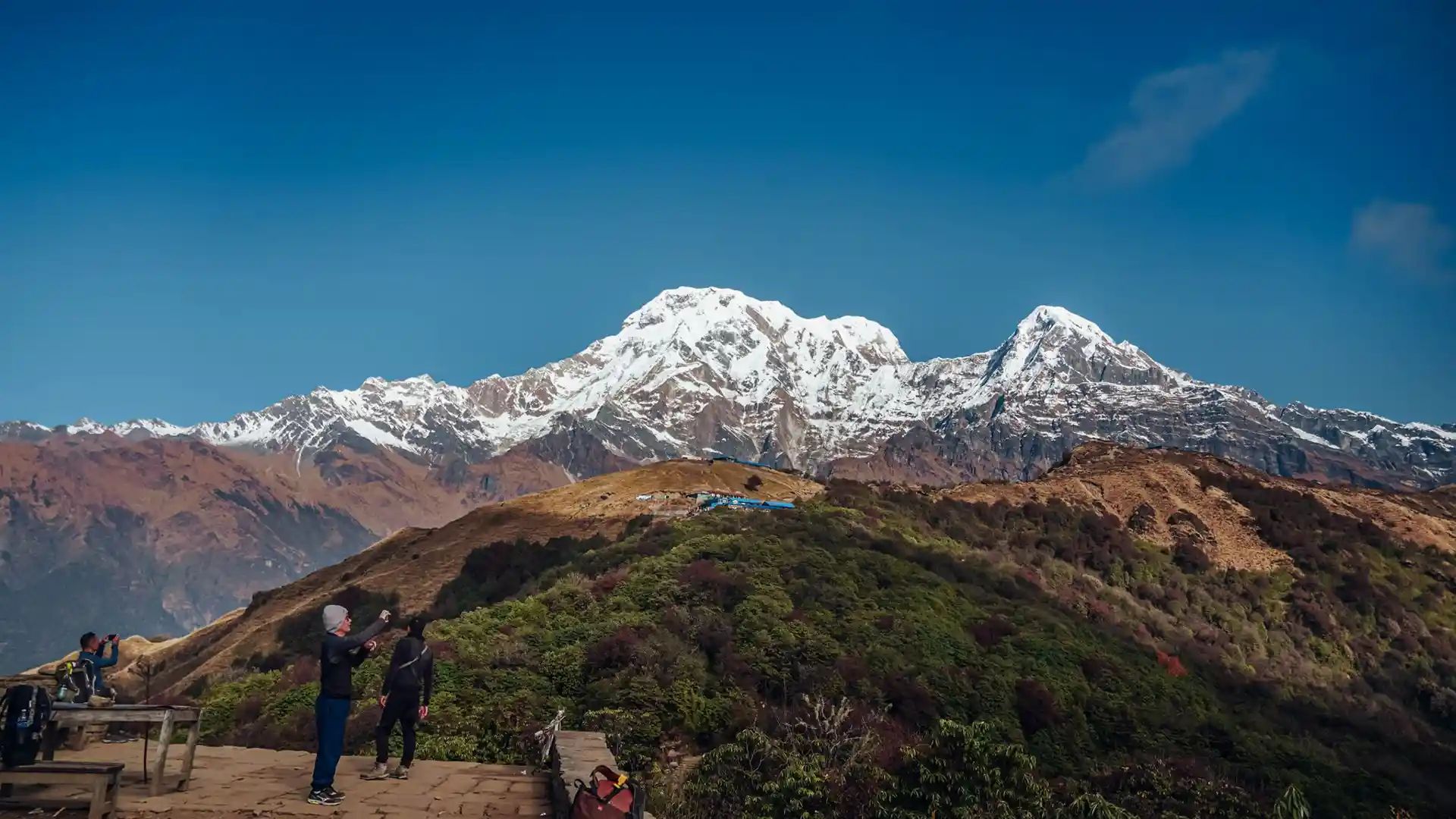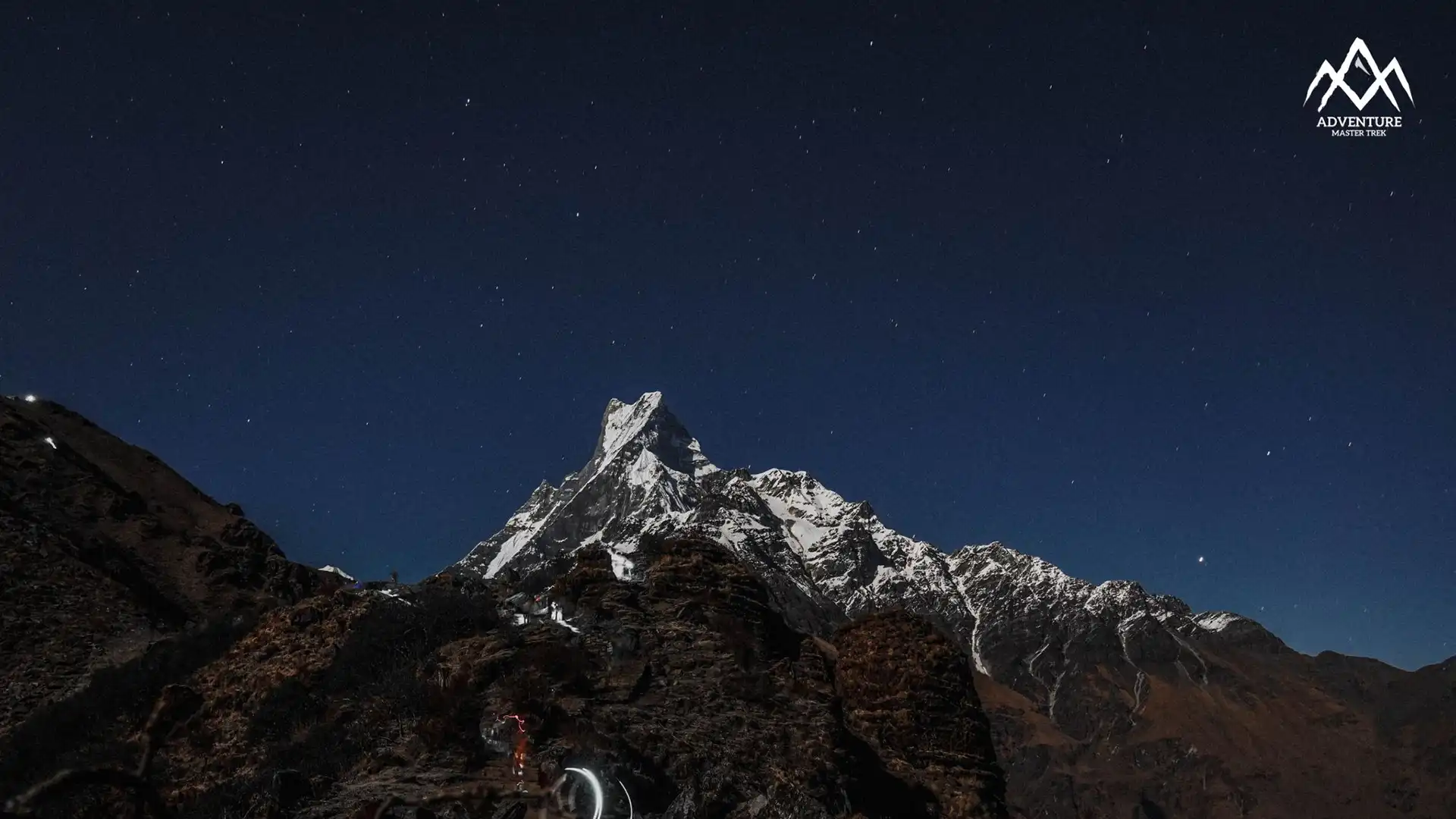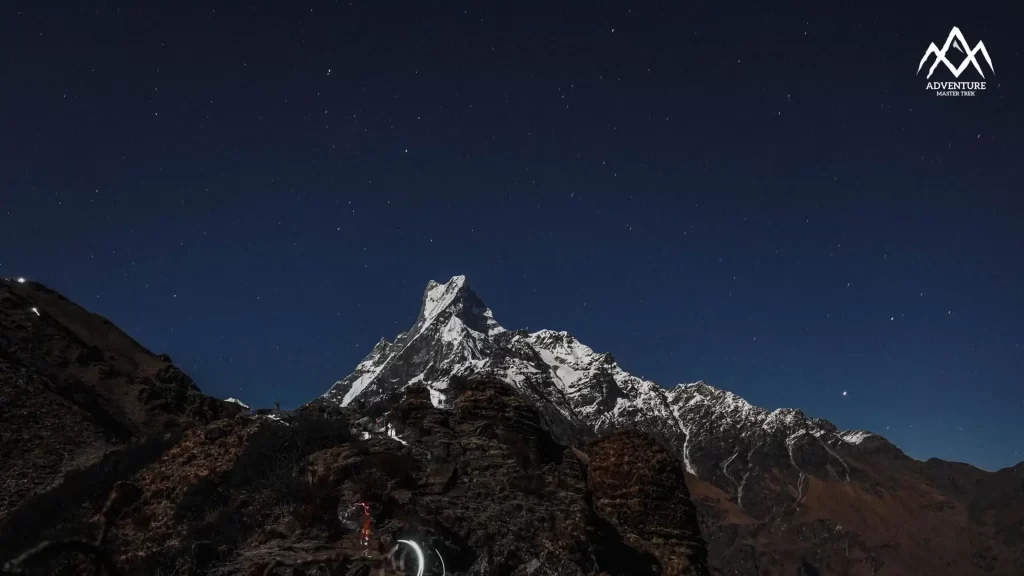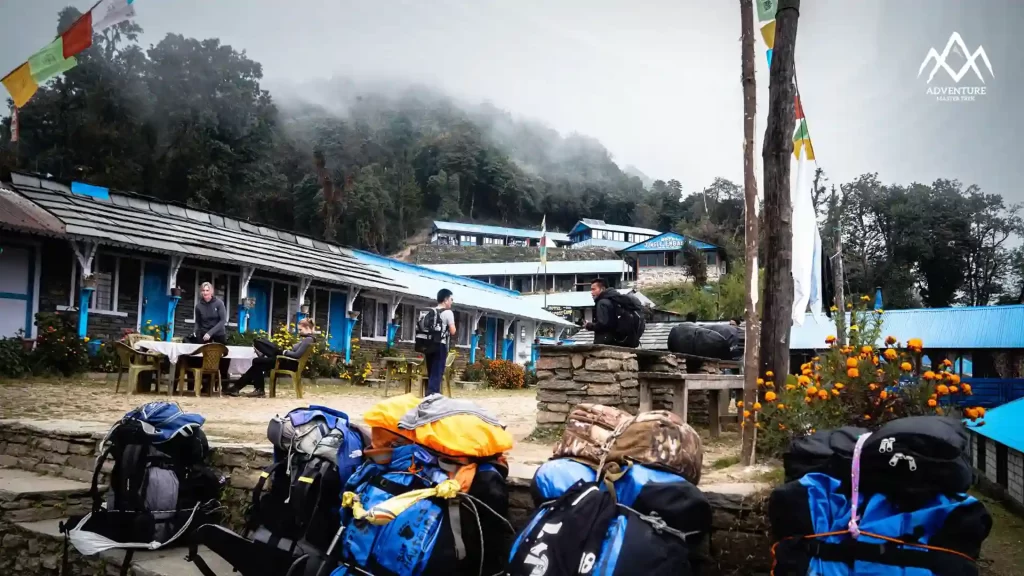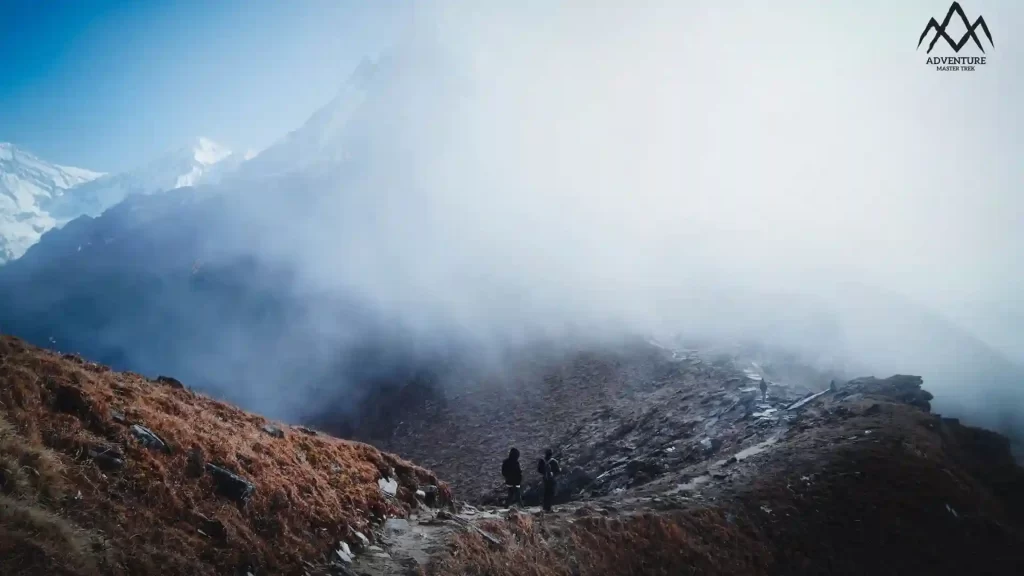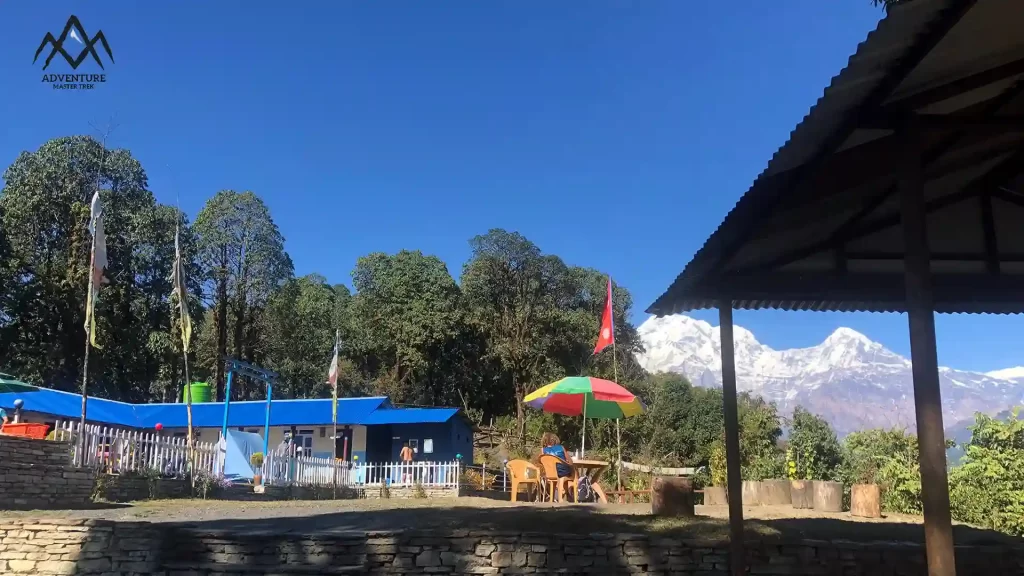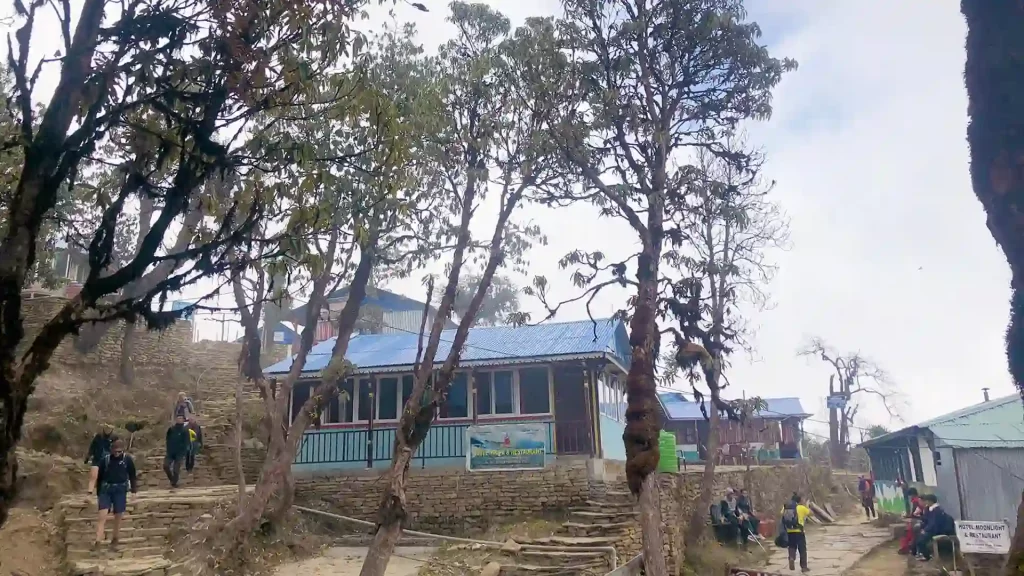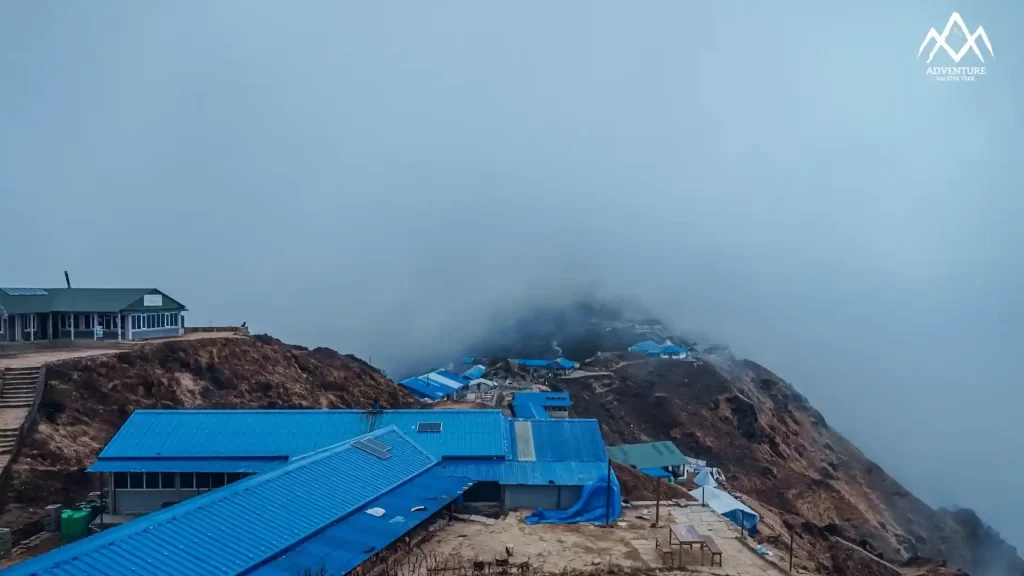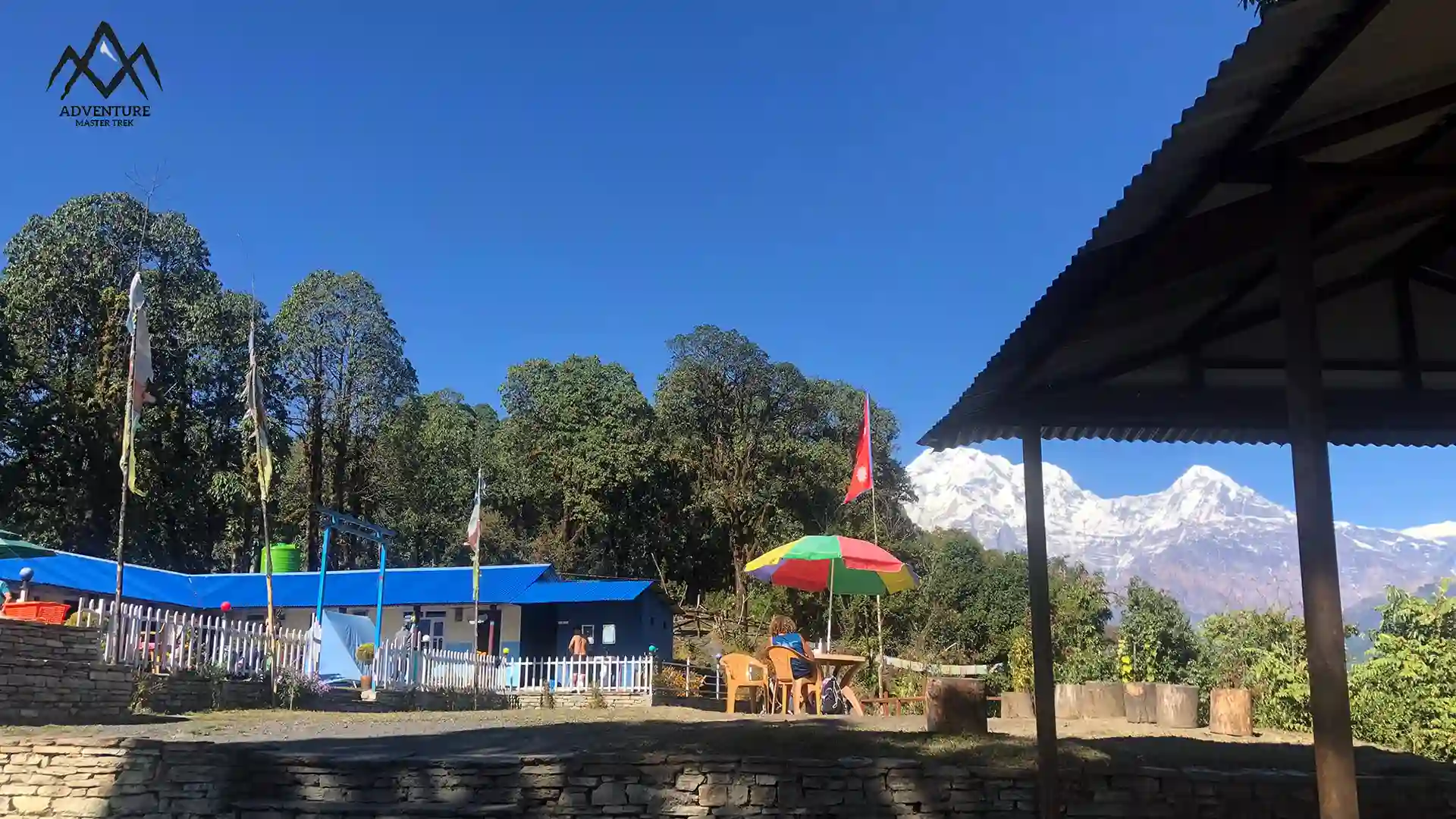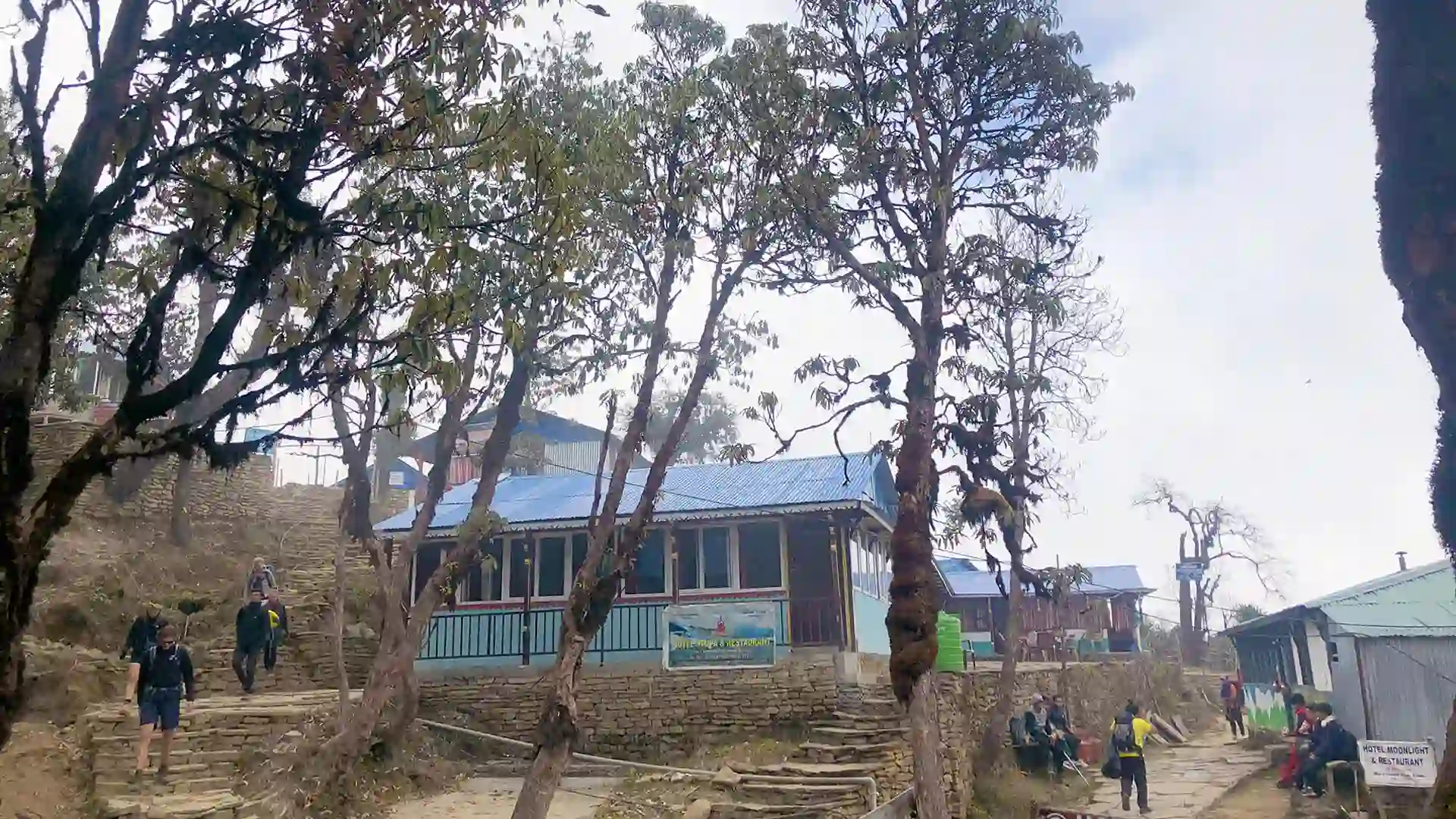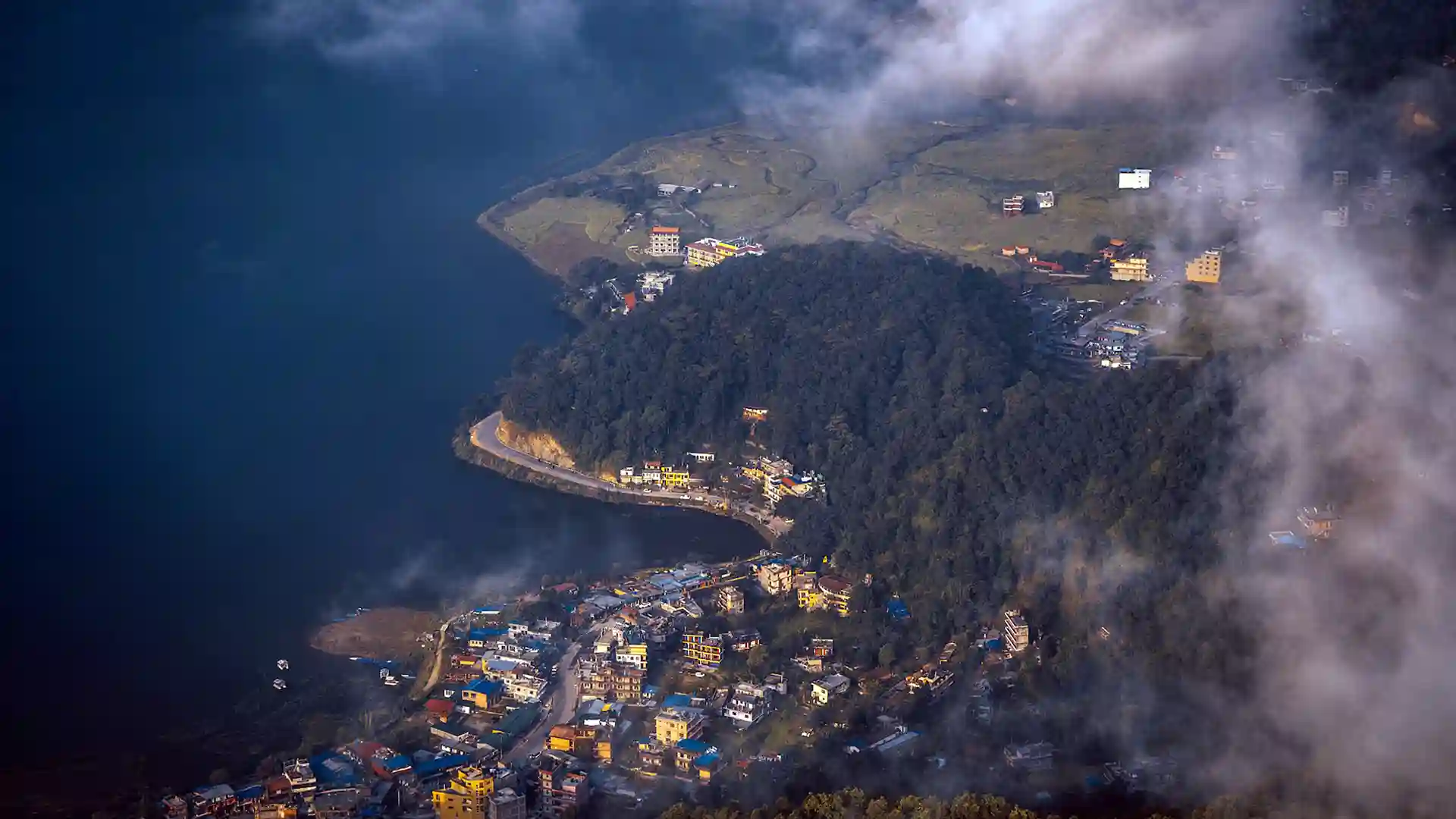Price Detail
Trip Price: USD 640 pp
Single Supplementary: USD 100/-
Group Discount
Upto 5 people: USD 540 /- pp
Upto 10 people: USD 460/- p.p.
Disclaimer of Itinerary
The schedule for our Mardi Himal trek may change depending on things like the weather, the state of the roads, and the availability of places to stay. We have the right to change the schedule if we need to.
We try to stick to the plan for the Mardi Himal base camp trek, but there may be times when we have to change the route because of something unexpected. As trekking in a remote area can bring up unexpected problems, the trek leader may need to change the plan for the group’s benefit.
Important Notes
- Physical fitness is important for the Mardi Himal trek, which is a moderate to difficult trek. Before starting the trip, you should make sure your body is in good shape. Before the trek, do regular physical activities to get your body ready.
- Altitude sickness: The Mardi Himal trek route goes up to 4,500 meters, which can increase the chance of getting altitude sickness. Pay attention to your body and let your guide know if you get a headache, feel sick, or have trouble breathing.
- Pack light things: For the hike, pack light. Just the things you need, and leave anything else in the locker room of the hotel. Follow our list of things to pack.
- Proper clothes and gear: Wear layers and bring warm jackets, gloves, hats, and other clothes and gear that are right for the hike, like a warm hat and gloves. Also, bring shoes and clothes that won’t get wet.
- Respect the culture and traditions of the area. The Mardi Himal trek is in Nepal’s Annapurna region. You will be hiking through small towns. So, you should be aware of the natives and respect what they believe. Some of them may sound strange to you but remember that, like yours, it’s their way of life, and no one has the right to treat it badly. Follow the rules your trekking guide gives you, watch what you do, and don’t leave trash behind.
Safety and Security
Nepal is a safe place to visit, whether you are by yourself or with family. Since we are a registered Nepali trekking company, you can put your money and time in our hands. Our team members are experts in Nepal’s tourism industry, and we work hard to make sure that all of our treks go smoothly.
During the hike, the team leader will be in charge of your safety and well-being. The leader has a satellite phone in case of an emergency, and we stay in touch with the team often to make sure everything is going well on the trip. We care most about the safety of our guests.
Concerning COVID-19, everyone on our team has been vaccinated, and the country is now open to tourists from all over the world. Most people have had one or both doses of the COVID-19 vaccine, so it is safe to make the trek.
Note: Please remember that it is always a good idea to follow local rules and guidelines (if there are any) to stop the spread of the virus, such as wearing a mask and keeping clean.
Travel Insurance
For the Mardi Himal trek, you must have travel insurance because there are risks that come with going to a remote area and climbing above 4,000 meters. Even though we take steps to keep people from getting altitude sickness, we cannot promise that no one will get it.
Because of this, having travel insurance can help us get medical help quickly if we need it. For the Mardi Himal trek, it is important to make sure that your travel insurance covers emergency air evacuation up to 5,000 meters and medical costs.
Minimum Age
You have to be at least 18 years old to join our Mardi Himal base camp trek. If you are younger than 18, you must be with a parent or guardian. If you want to bring a child under 12 years old on the trek, please get in touch with us so we can see if they can join.
As long as everyone’s health is good, parents can trek to Mardi Himal with their kids. Our team is ready to give extra care to families with young children or older people. Please don’t worry about anything while we are hiking.
Best Time
The best times to go trekking in the Annapurna area, including the Mardi Himal Base Camp Trek, are in the spring (March to May) and fall (September to November). During this time of change, the weather is most stable in the mountains, and a mild climate is perfect for exploring. During these times of year, the weather is usually clear and visible, which is great for hiking. People also know the area for its beautiful wildflowers, which are at their best in the spring. In Nepal, the monsoon season is usually from June to August. The Mardi Himal Base Camp Trek can be done during this time, but the trails can be slippery and there may be a lot of leeches.
Winter (December to February) is also a good time to go because the trails are less crowded and the weather is cooler, which makes for good hiking. But the weather can be more unpredictable at higher elevations, where snow and cold weather are possible.
Payment process
You need to pay a 25% deposit up front. If you pay with a credit card, you might have to pay an extra 4% charge.
Cancellation policy
The cancellation fees are calculated as a percentage of the total tour price:
- Cancellation one week before departure: 15% of full payment will be deducted
- Cancellation on the same day: 25% of full payment will be deducted
- No refund on cancellation after departure
Tipping
The cost of the Mardi Himal Trek does not include tips. We let our guests decide how much to tip the people on our field crew. Tipping is more of a cultural thing than something you have to do. But we recommend tipping to show your appreciation for your team’s hard work, and it is best to tip as a group.
Group Leader – What They Do
Our group leaders are in charge of leading people and groups in the mountains. During the Mardi Himal trek, you will be with a skilled mountain guide. They are licensed and have a lot of experience leading treks in the Himalayas. They have had a lot of training and have a lot of certificates that show they can be trusted.
We also work closely with the best local guides in the Himalayas, who have been doing this for a long time and are known for being friendly and helpful. When there are more than eight trekkers, an assistant guide will also be there to make sure everyone is safe and healthy.
Size of Group Notes
When planning a trek, group size is an important thing to think about. It can change how the group works as a whole, how much help and guidance is given, and how much the trip costs as a whole.
So, we try to keep our groups small so that we can be more personal and have a more intimate experience. Smaller groups, on the other hand, may cost more per person because they need more help and guidance.
In the same way, we also organize trekking on the Mardi Himal for large groups. Larger groups may be cheaper, but they may also be harder to manage and not give as much room for customization. Find a balance that works for your needs and preferences, and let us know.
Transport
We pick up and drop off our guests at the airport so that the beginning and end of their trip is easy and convenient. In the same way, we get from Kathmandu to Pokhara on a tourist bus or a private four-wheeler. In the same way, we take a local vehicle from Pokhara to the beginning of the trail and back to Kathmandu.
Local flight
No domestic flights are included in our Mardi Himal trek package. We get from one place to another by riding four-wheelers. If you want to upgrade your travel, you can take a short domestic flight from Kathmandu to Pokhara and back in 20 minutes. There will be extra costs.
Solo Travelers
As a solo traveler on the Mardi Himal trek, you will get to experience the culture and natural beauty of Nepal while also testing your physical and mental strength. The hike is good for intermediate to advanced hikers because it has some steep hills and rocky ground. But when you reach the top, you will feel proud of what you have done and be amazed by the view.
On the Mardi Himal trek, people who are traveling alone can choose to join a group or go it alone. Joining a group can make you feel safe and give you friends while joining a private trek gives you more freedom and independence. No matter which option you choose, make sure to prepare well and get used to the high altitude because it can be hard for some hikers.
Joining Instructions
It is easy to book a trek with us. Visit our website and book and pay for the trek using our secure payment gateway. You can send an inquiry if you have any questions, and one of our travel consultants will be happy to help you. Our system for making reservations is easy to use and won’t take more than a few minutes.
The best time to sign up for the Mardi Himal base camp trek for spring or fall 2023 is right now. Booking early will give you a lot of time to get ready for the trip and think about any problems you might face.
If you have any questions about the Mardi Himal trek, feel free to contact us through the link above or by calling +977 985-1033195 (WhatsApp/Viber).
Problems With Arrival
If your flight is late or canceled, let us know as soon as you can. It will help us change the reservation to match the time you plan to arrive. Putting off the trip until the last minute might cost you more money.
In the same way, if you can’t find a member of our team at Tribhuvan International Airport, try calling us on WhatsApp or Viber. At the airport, you will be able to use the internet for free. You can also ask the government in your area for help.
Before going to Nepal, travelers should make sure that their visas are up to date and in order. Any problems with visas can cause delays and other problems when you get there.
Emergency Contact
You can call us at any time on our emergency numbers. These numbers can also be used for WhatsApp and Viber. These are the numbers to call if you need to reach us in an emergency: +977 9851033195, +44 7983806200, and +977 9849780311. You can talk to the main people on our team about these numbers. In the same way, you can call us during office hours at our office number. (M-F, 9 a.m.–5 p.m. local time)
Visa and Entry Requirements
To get into Nepal, you need a travel visa that is good for at least six months. Many countries can get a visa when they arrive in Nepal, which can be done at any of the country’s entry points. If you arrive at Tribhuvan International Airport, you can get your visa before meeting with our company representatives.
Check to see if your country can get a visa when you get there or if you need to go to the Nepalese embassy or consulate to get one.
Please keep in mind that it is the traveler’s job to get their own visa.
We suggest that you check the visa requirements and apply for a visa as soon as possible. We can give you a letter confirming your trip, which you may need for the visa application process. If you cannot get a visa and have to cancel your trip because of that, you may have to pay a cancellation fee.
Money Exchange
When traveling to Nepal, you will need to change your money. Here are some things you should remember:
The Nepalese Rupee is the country’s official currency (NPR). It is best to bring cash in small bills, since it may be hard to change large bills.
Rates of exchange: Exchange rates can change, so check the current rate before you change your money.
Places of exchange: Nepal has many places where you can exchange money, such as banks and money exchange centers. Most of the time, it is best to exchange money at a bank or a licensed money exchange office, as they tend to have better exchange rates.
Credit cards: Most hotels, cafes, shopping centers, and larger stores in Nepal accept credit cards, but smaller shops and restaurants might not. Having some cash on hand is a good idea.
ATMs: There are ATMs all over Kathmandu and other big cities and towns. At any ATM, you can use your international card to get cash.
Emergency Fund
Having a fund for emergencies can give you financial security and stability in case something unexpected happens, like a flight delay, lost or stolen items, or a medical emergency. Setting aside a certain amount of money before your trip is a good way to start a travel emergency fund.
Depending on the length and location of your trip, we usually say that you should have at least a few hundred dollars saved in case of an emergency.
You should keep emergency funds somewhere safe and easy to get to, like a travel credit card or a prepaid travel card. These options let you access your money while you’re on the road and also protect you from fraud and make it safer.
First Aid
We will have a first-aid kit with us on the trek in case anyone needs basic medical care. Our team leader has been trained in first aid, so if anyone needs help, he or she will be able to give it.
The kit has an Oximeter, bandages and plasters, ankle bandages, antiseptic ointment, moleskin for blisters, painkillers, rehydration salts, antibiotic throat lozenges, medicine for altitude sickness, and a broad-spectrum antibiotic.
We also have sterile syringes and a gel for cleaning. You don’t need to bring your own first-aid kit.
Packing list
After you book, our team will also give you a personalized packing list that you can use to pack for the Mardi Himal trek.
For now, you can look at the things below to get a general idea.
Head and Hand
- Sun Cap
- Wool/Fleece Hat
- Balaclava
- Neck Gaiter/High Neck
- Lightweight Synthetic Liner Glove
- Wind Stopper Fleece Gloves
Upper Body
- Short-Sleeved Shirts/T-shirts
- Lightweight Top/Thermo Coat
- Synthetic or Fleece Jacket
- Down Insulated Jacket
Lower Body
- Underwear
- Lightweight Long Underpants
- Midweight Long Underpants
- Trekking Pants
- Trekking Socks
- Sandals
- Lightweight Hiking/Trekking Boots
Toiletries
- Hand Sanitizers and hand wash
- Wet Tissues
- Toothpaste
- Toothbrush
- Bath Soap
- Shampoo
- Moisturizers
- Laundry Soap
- Eye Drops
- Zip-Lock Bags
- Sunscreen (-50 Spf)
- Lips Guard (-20/-50 Spf)
- Water Purification Tablets
- Baby Wipes or Wet Towels
Miscellaneous
- Rucksacks (45 – 55 Ltr.)
- 1 Duffel Bag (provided by the company)
- Trekking poles
- Sleeping bag
- Torchlight
- Water Bottles
- Thermos/Flask
- Pack Towel
- Spare batteries
- Waterproof Stuff Sacks
- Solar chargeable power bank (optional)
- Bars & Snacks
Travel Document
- Valid Passport
- Valid Visa
- 4 PP Size Photo
- Insurance Paper (Medical & Rescue) & Contact Address
- Family/Company Contact Number & Address
- Credit Card
